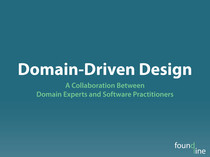Found Line had the privilege of designing and developing Vermont Public Radio‘s (VPR) new homepage. VPR’s Online Manager, Jonathan Butler, wrote a blog post about how the redesigned homepage delivers more content to VPR.net visitors. Here I’ll talk about the technology behind this new homepage.
Atom Syndication Format
Most of VPR’s web content is currently stored in a proprietary content management system (CMS). The first step was publishing the needed content from the CMS out into an open format. VPR’s Dan Allen published from the CMS Atom feeds of the various content we would need for the new homepage.
PHP and Zend Framework
Once we had the needed Atom feeds, we created a Zend Framework web application to import these feeds. Components such as Zend_Feed_Reader made the job easier. The weather data comes from the National Oceanic and Atmospheric Administration’s (NOAA) National Weather Service’s National Digital Forecast Database XML/REST Service. The market data comes from the Google Finance API.
CouchDB
All of the data (except for weather, which is pulled directly with a bit of caching) is stored in CouchDB. Since we’re storing documents with varying metadata (i.e. Atom entries) choosing a document-oriented database made a lot of sense. CouchDB’s map/reduce views make for very efficient queries. Its RESTful HTTP API provides a lot of options for scaling and caching. We’re caching documents within the Zend Framework application and conditionally requesting these documents from CouchDB with ETags when a cache is available. The current cache is simply file-based but we’re considering using Memcached for even better performance. On a related note, the homepage itself also supports conditional HTTP requests.
Apache and nginx
We had the pleasure of working with another great Vermont company, ClearBearing, on this project. ClearBearing handles the infrastructure layer for VPR.net. The current website was (and still is) served up by Apache. ClearBearing already had nginx in place as a reverse proxy to handle caching. Since we weren’t replacing the entire CMS we needed a way for the existing CMS and this new application to coexist. We decided to host the new application separately (still administered by ClearBearing) and reverse proxy requests for certain URIs (primarily the homepage) to the new application. This provides a clean separation between the new application and the existing CMS while still allowing for them to be hosted on the same domain from an end-user perspective.
Licensing
You’ll notice that all of the standards used are open standards and all of the technologies used are free and open source software. Additionally, all of the code we have written for VPR is licensed to them under the permissive New BSD License. This means that VPR is free to use this code however they want, study and modify the code, and redistribute the code as-is or modified. They can do all of this without paying additional licensing fees.
Design
While this post is primarily about the technology behind VPR’s new homepage, I should mention that Found Line’s Jason Pelletier designed the new homepage and implemented all of its HTML and CSS. We worked closely with Jonathan Butler and John Van Hoesen, Vice President for News & Programming, to make sure the new design meets the needs of website visitors and the organization.
Next Steps
The launch of this new homepage was just one iteration with many more to come. As Jonathan Butler mentioned in his blog post, VPR has plans to further improve online services for their listeners. Look for a redesigned VPR Classical page soon. There are also plans for better mobile access to VPR and VPR Classical programming. Fortunately much of the work that has been done can be leveraged to create additional online services for VPR’s listeners.
A special thanks for the support of VPR’s listeners—you made this new homepage possible! If you have questions, comments, complaints, or suggestions about the new homepage then please contact VPR directly with your feedback (although you’re welcome to comment here as well).





3 Comments
It’s great that you used the redesign opportunity to address aesthetics, usability and performance. Usually one of those gets forgotten during redesigns, but the VPR site looks great, it’s easy to use, and it’ll load faster. Nice job!
Very nice idea to use feeds as data sources. Many developers are stuck with the equation data==relational database and this would be an interesting link to point them to.
Zend Framework application and conditionally requesting these documents from CouchDB with ETags when a cache is available. really good point.